

Now playing:
Watch this:
Watch us scale a beautiful cliff in this game for the…
2:06
Here’s an experience you probably won’t have in real life: climbing a famous mountain. Few humans ever attain the frosty summit of Mount Everest, or even pull themselves up the more hospitable cliffs of Rio de Janeiro. Video game developers are about to give us the next best thing, though, with a virtual reality climbing experience that can even feel like a little bit of a workout.
Earlier this month, I got to try two new experiences for upcoming virtual reality headsets which put me on top of the world: The Climb from Crytek, the developer of Crysis, and Everest VR, from Solfar Studios. Here’s how they felt.
Tropical paradise
“Can it run Crysis?” is a venerable running joke among video game fans, as developer Crytek is notorious for making games so lush and beautiful that you generally need to buy an expensive new graphics card for your desktop PC if you want to play them. The Climb, Crytek’s first game for the Oculus Rift VR headset, doesn’t seem to be the exception.
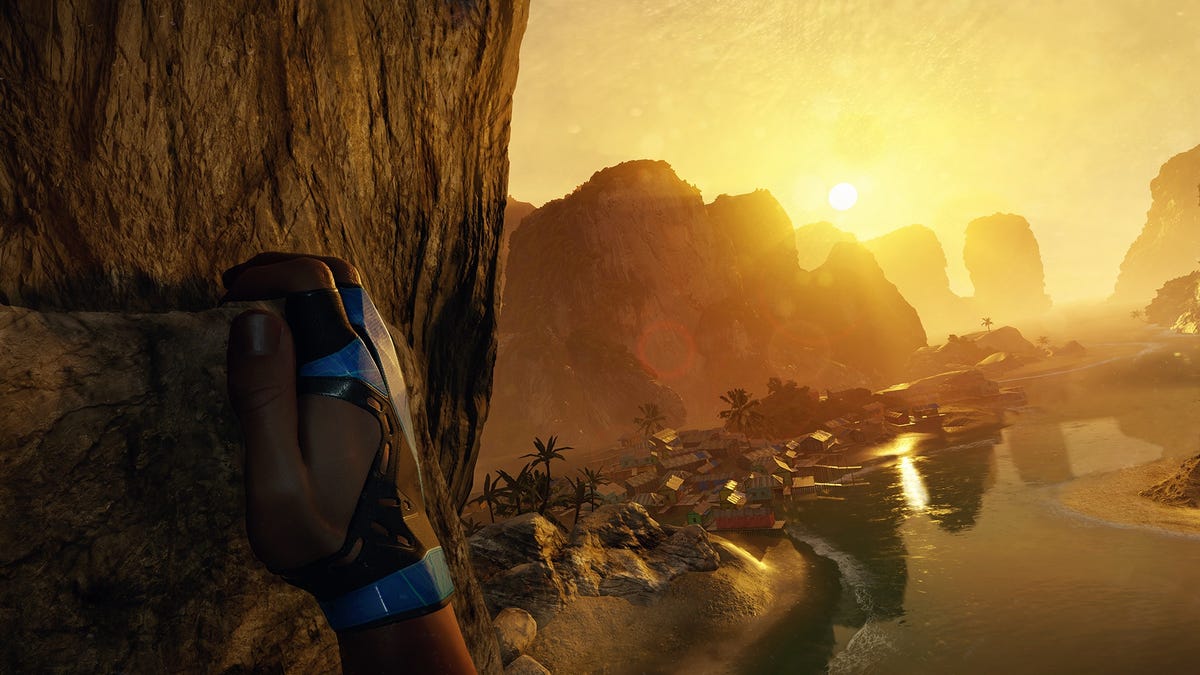 Enlarge Image
Enlarge ImageCrytek
The moment I put the headset on my noggin, I was thrust into a picturesque tropical paradise — an emerald cove filled with palm trees and bathed in golden sunlight, ready to be explored. Birds flew overhead, while a sea turtle gently swam below. I saw it all from my perch atop a rocky column, where a series of clearly marked handholds showed me the path up. A Crytek developer handed me an Xbox controller, and told me to look up, then pull one of the controller’s triggers under my index fingers, to start my ascent upwards.
James Phelan/CNET
It’s pretty impressive, really, how simple it is to climb in The Climb. The only thing the game can see is your head, because that’s what the Oculus Rift’s camera tracks. So basically, all you have to do is turn your head, and move it a bit, to move your hands to the next handhold on the rock face, one at a time. Every so often, you press a button to chalk your hands so your (virtual) sweat doesn’t cause you to lose your grip and plummet to your death.
But the game cleverly pulled me out of my comfort zone, making me stretch — even stand up on tiptoes — to reach the next handhold, time and again. It made me move my body like I might if I was actually climbing, more or less, which added to the sense of immersion. (As did my character’s heartbeat, which pounded in my ears if I moved too quickly.) I actually began to work up a little bit of a real sweat, too.
And that’s when the game told me I needed to jump from one cliff to the next. Oh boy.
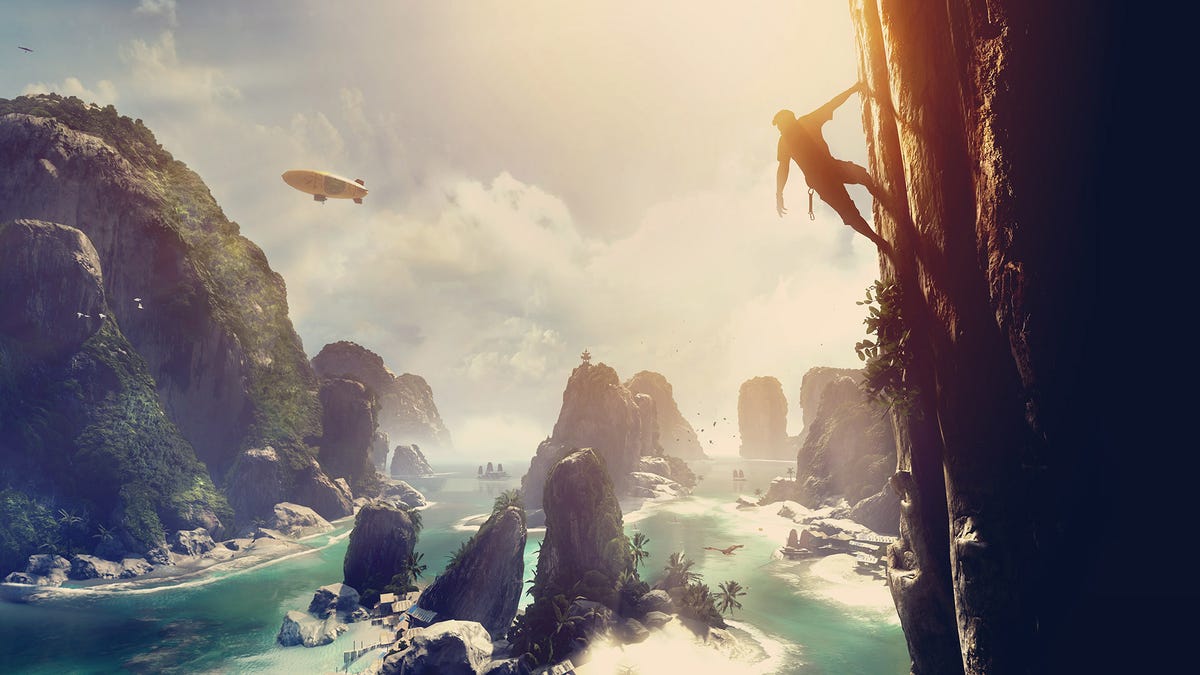
 Enlarge Image
Enlarge ImageCrytek
If you’ve played Uncharted, the hit PlayStation series where you play the wisecracking adventurer Nathan Drake, or one of the recent Tomb Raider games featuring gun-toting adventuress Lara Croft, you’re probably familiar with scenes where you have to rapidly scale a sheer cliff with your bare hands and jump from one to the next, repeatedly, to avoid certain death. Inside the Oculus Rift, there were no helicopters with machine guns or crumbling cliff faces to compel me to make that jump…and yet somehow it felt more exciting and terrifying than a traditional game with those incentives pushing me forward.
In virtual reality, as in real life, you can tell if the drop is a long one, and yet you can’t tell if you can make a long distance jump until you try. Honestly, I got a bit of a chill down my spine. I looked up. I pressed the jump button. My character leapt, while my real body stood up on tiptoes as if leaping in unison. I pulled the triggers to grab, and the next thing I knew, I was hanging off the cliff, by one arm, on the opposite side — just like I’d seen my favorite video game characters do before oh-so-many times.
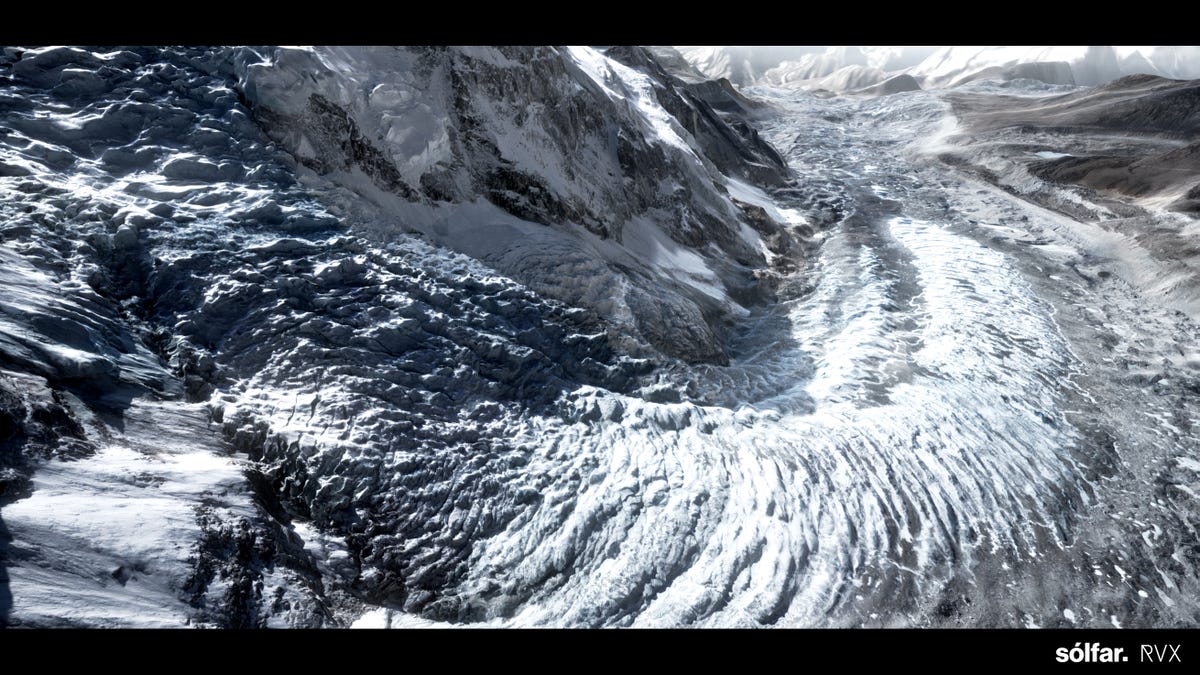
 Enlarge Image
Enlarge ImageSolfar Studios
Frozen wasteland
I’m just going to say it: Everest VR wasn’t quite as exciting as The Climb. But what is extremely compelling about Solfar Studios’ new experience is that the Mount Everest you see in virtual reality is pretty dang close to the Everest that exists in real life. In fact, it’s the same peak featured in the 2015 Hollywood movie “Everest,” created by combining 300,000 high-resolution photographs taken from helicopters circling the actual mountain. (Visual effects studio RVX worked on the movie, and partnered with Solfar for the virtual reality experience too.)
And I’ve got to say, there were some pretty stunning moments in my demo. The experience is broken up into episodes that are designed to show you what real climbers see at various perilous and wondrous moments in the journey, and give you a sense of the real scale of Mount Everest and just how gigantic it is. While I barely felt a change in elevation in The Climb, this Everest VR demo starts with a helicopter ride that made me feel like a tiny bug compared to the vast frozen peak.
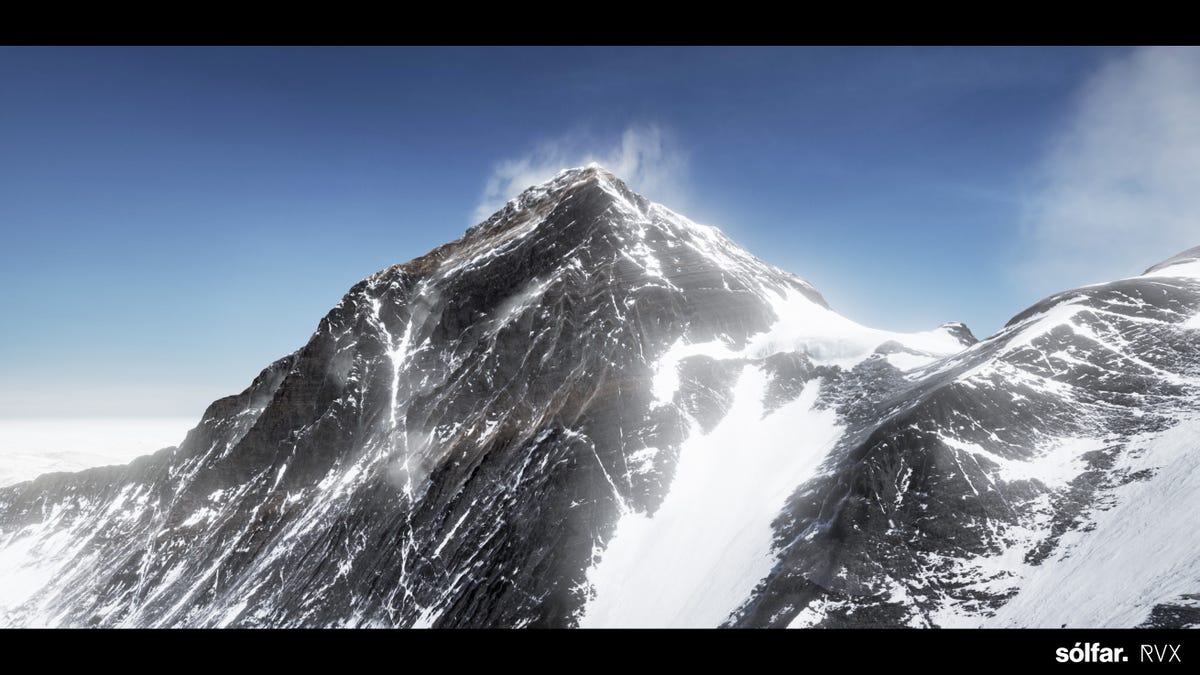
 Enlarge Image
Enlarge ImageSolfar Studios
The HTC Vive’s motion controllers (did I mention I tried this experience on the HTC Vive virtual reality headset?) help a lot too. There’s a moment where you get to walk across a rope bridge, and you can feel the rope sliding through your hands thanks to the controllers, which vibrate in a delightfully subtle way as you walk across the potentially treacherous bridge. You actually walk with your real feet, too, because the Vive can be calibrated for the room you’re in, and then let you walk around it.
First steps
Neither The Climb nor Everest VR made me believe I was actually climbing a mountain. They didn’t fool me, and I doubt they’ll fool you either. Virtual reality isn’t far enough along to keep you frightened of accidentally falling to your death. Plus, both of these early experiences had issues that broke the sense of immersion here and there. I bounced off a couple of cliffs in The Climb none the worse for wear. It’s also pretty disconcerting not to have a body in that game — just a pair of disembodied hands.
Meanwhile, Everest VR should really take cues from The Climb about how to climb up a ladder: it feels pretty forced and boring in the Everest simulator right now.
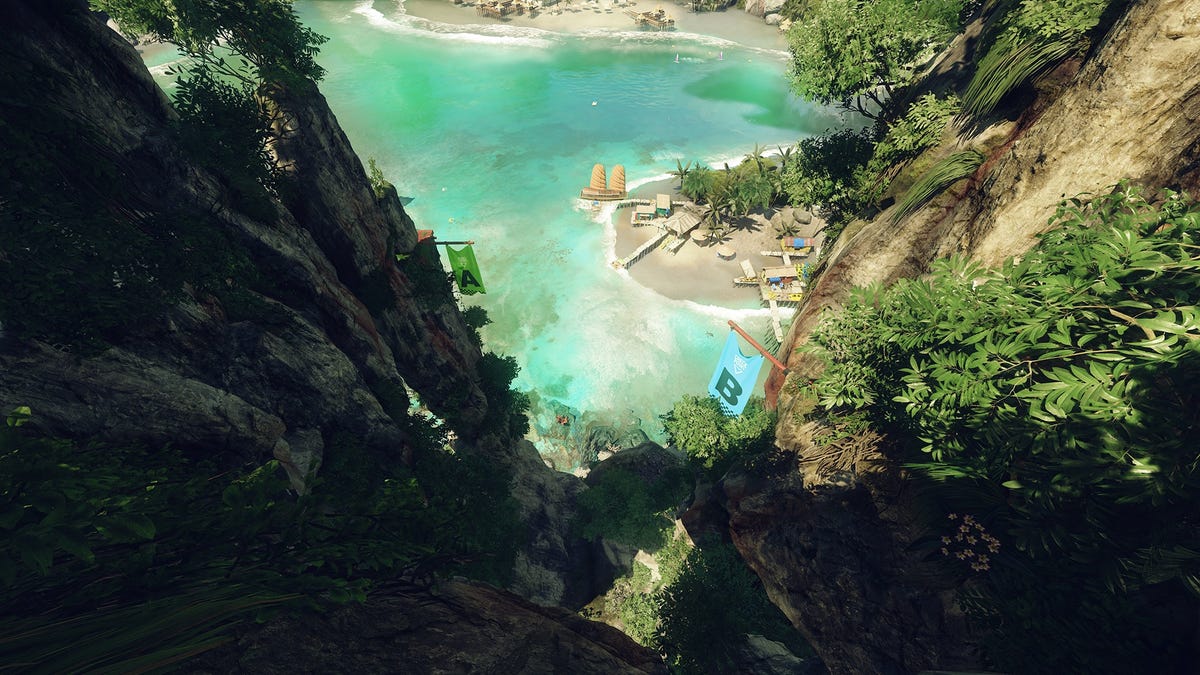
 Enlarge Image
Enlarge ImageCrytek
But in both games, it was fun, and intriguing, to experience even a sliver of what it might be like to climb a mountain in the real world. Both experiences will be available in the first quarter of 2016, on the Oculus Rift and HTC Vive headsets, respectively. (The Climb is exclusive to the Rift.) I’m definitely looking forward to checking them out.
Solfar Studios tells me that Everest VR will include a whole series of experiences leading to the summit of the mountain. I’d love to have a peek. And Crytek says The Climb will feature a whole bunch of different mountains with different difficulty levels, including harder handholds and more pressure to get your butt in gear.
They tell me that I should definitely expect some seriously extreme Nathan Drake moments when the full game arrives next year.



